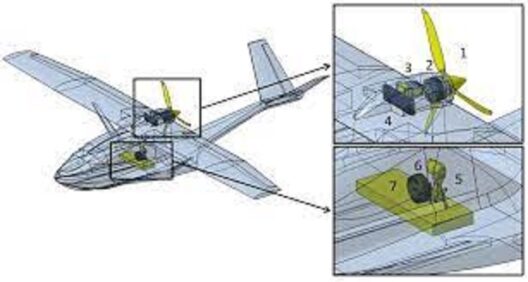An Italian trimaran light seaplane has many interesting features. From its hybrid power system to its unique patented folding wings, the Novotech Seagull showcases innovation.
Professor Leonardo Lecce has taught aeronautical structures and aerospace construction and maintenance practices at the Federico II University in Naples.
Why the choice to limit the craft to marine operations only? La Republic explains Seagull “allows two people to fly from any coastal location to another, doing without hydroscales and hydroports now non-existent, thanks to a revolutionary technology already patented, of an automated system folding of the wings that allows once moored (landing at sea), to reach and dock in any quay or dock. But also to bring this aircraft ashore in the garages as a small boat or, for the ‘pieds dans l’eau’ (‘feet in the water’) hotels or for the lucky ones who have a villa with access to the sea or the lake, to park it in your garden.”
The 650-to-700 kilogram (1,433-to-1,543 pound) craft flew in early 2021, but COVID restrictions and some unstated engineering considerations seem to have constrained development. Despite that, the craft’s unique wing folding system is a big part of its interest. Novotech describes its, “Automated folding wing system (Patent n. 102017000131163… ‘Mechanisms for transforming an ultra-light aircraft into a sailing and motor-powered vessel’) that makes possible to pass from aircraft to hull configuration and vice versa, through two electromechanical actuators that can operate also as strut of a braced wing.”

Wings fold automatically through sophisticated mechanisms, tuck alongside fuselage for “sailing” and docking. Photo, Carlo Armando Gaetano Tripodi
Between those folding wings, Seagull can incorporate a variety of conventional and hybrid power systems. Novotech shows at least four possibilities on its PowerPoint presentation.
A series hybrid arrangement would have an internal-combustion engine driving a generator that would charge batteries to power a single electric motor and propeller. A parallel hybrid system would combine power from an electric motor and internal-combustion engine to drive a propeller. A series-parallel hybrid arrangement would combine power from an engine-driven generator and a battery pack to drive a single electric motor. Finally, a complex hybrid system would use an IC engine to drive two generators that would drive the single motor on the propeller (much oversimplified).
Developers hope for the following positive outcomes of hybrid power:
- Less consumption and pollution by using hybrid drives;
- Increase of efficiency of aircraft by distributed propulsion;
- Silent propulsion • Lower operation costs (fuel, maintenance);
- Safety increase with redundant energy source
More to Come
Still to come, depending on the results of tests on two-seat Seagull, a four-seat version may be in the works, followed by an electric Vertical Take Off and Landing (eVTOL) rendition.
Another variant might include hydrofoils for high-speed taxiing and quicker takeoffs.
With Novotech’s advanced structural, power, and composite expertise, these projects may make amphibious electric and hybrid flight a real possibility.
(Note: The lead image is of a ceremony celebrating the June 1923 creation of a seaplane base for the Regia Aeronautica “between the small Neapolitan island and the beach of Coroglio, which continued to be operational until 1947. Almost a century after that first settlement, at the Logistics Command of the Navy of Nisida, a study day of the Circuit of the Historical Idroscali d’Italia took place.”)





